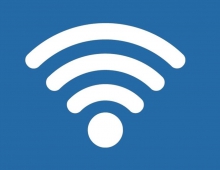
FCC To Promote Interoperability In The 700 MHz Band
The Federal Communications Commission (FCC) today issued a Notice of Proposed Rulemaking (NPRM) to promote interoperability and encourage the efficient use of spectrum in the commercial Lower 700 MHz band (698-746 MHz).
The rulemaking is designed to examine
the interference concerns should the Lower 700 MHz band utilize a single band class for devices
operating across the Lower 700 MHz A, B, and C Blocks.
In the NPRM, the FCC seeks comment on a range of technical and operational factors regarding the use of a unified band class on customers of Lower 700 MHz B and C Block licensees. The NPRM focuses on two interference concerns that can result with use of a single band class: (1) reverse intermodulation interference from adjacent DTV Channel 51 operations; and (2) blocking interference from neighboring high-powered operations in the Lower 700 MHz E Block. To properly evaluate the interference concerns, the FCC requests comment on measurements and quantitative analyses regarding the magnitude and extent of the interference risk from adjacent Channel 51 and Lower 700 MHz E Block transmissions, the availability of effective interference mitigation measures, relative performance of devices using a single band class, and costs of implementing interoperability.
The NPRM also explores possible next steps that the FCC should take to promote interoperability in the Lower 700 MHz band should it find that there is limited or no harmful interference or such interference can be reasonably mitigated through industry and/or regulatory measures.
The FCC also voted to move ahead with plans to open up 40MHz of wireless spectrum in the 2GHz band to mobile voice and broadband service.
The FCC agreed to open a notice of proposed rulemaking, or NPRM, asking what to do with the so-called S band of the mobile satellite services spectrum. In an NPRM, the agency seeks public comment on proposed rules, and the FCC's new notice asks whether to allow current licensee Dish Network to offer mobile service or to auction the spectrum.
In the NPRM, the FCC seeks comment on a range of technical and operational factors regarding the use of a unified band class on customers of Lower 700 MHz B and C Block licensees. The NPRM focuses on two interference concerns that can result with use of a single band class: (1) reverse intermodulation interference from adjacent DTV Channel 51 operations; and (2) blocking interference from neighboring high-powered operations in the Lower 700 MHz E Block. To properly evaluate the interference concerns, the FCC requests comment on measurements and quantitative analyses regarding the magnitude and extent of the interference risk from adjacent Channel 51 and Lower 700 MHz E Block transmissions, the availability of effective interference mitigation measures, relative performance of devices using a single band class, and costs of implementing interoperability.
The NPRM also explores possible next steps that the FCC should take to promote interoperability in the Lower 700 MHz band should it find that there is limited or no harmful interference or such interference can be reasonably mitigated through industry and/or regulatory measures.
The FCC also voted to move ahead with plans to open up 40MHz of wireless spectrum in the 2GHz band to mobile voice and broadband service.
The FCC agreed to open a notice of proposed rulemaking, or NPRM, asking what to do with the so-called S band of the mobile satellite services spectrum. In an NPRM, the agency seeks public comment on proposed rules, and the FCC's new notice asks whether to allow current licensee Dish Network to offer mobile service or to auction the spectrum.





















